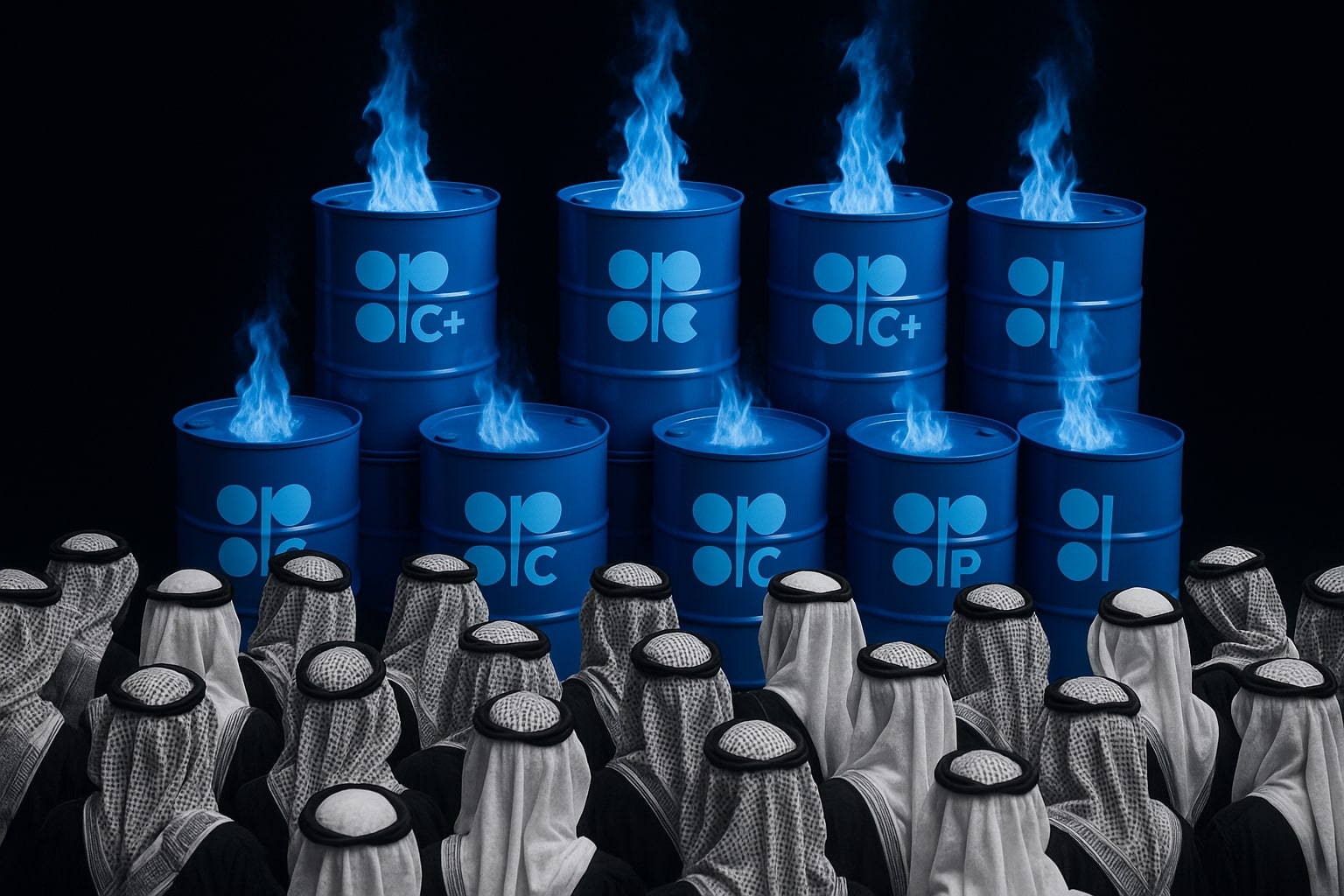
Natural Gas Price (NG=F) Rallies 5% to $4.55 as Winter Cold and LNG Flows Ignite Bullish Momentum
Colder U.S. forecasts, tightening inventories, and record LNG exports near 17.7 Bcf/d push Natural Gas (NG=F) above key resistance | That's TradingNEWS
Natural Gas Price (NG=F) Extends Rally As Cold Snap, LNG Demand And Tight Storage Spur Bullish Breakout
The Natural Gas (NG=F) market surged this week, with December Nymex futures climbing to $4.546/MMBtu, up nearly 3.6% on the day, as traders positioned for the first major cold spell of the winter season. The move above the 200-day moving average at $4.455 marks a pivotal shift in sentiment, with technical momentum now reinforcing a bullish bias. The catalyst has been a sharp upward revision in near-term weather models showing colder-than-normal temperatures spreading across the central and eastern United States from November 23 to 27, sparking expectations for the season’s first storage withdrawal of approximately 12 Bcf. The shift follows last week’s unexpected 45 Bcf injection, which temporarily pressured prices, but with the injection season effectively over, traders are rotating aggressively into long positions anticipating sustained draws through December.
Weather And Seasonal Fundamentals Reignite Uptrend In NG=F
Colder air patterns and increased heating demand are rebalancing what had been an oversupplied gas market for most of autumn. Heating degree day (HDD) forecasts rose 18% week-over-week, while regional demand projections for the Midwest and Northeast added nearly 3.5 Bcf/d of incremental consumption over the next ten days. Market models show a sharp reduction in power burn for renewables, pushing additional reliance on natural gas-fired generation. With the Lower 48 demand rising to 87.3 Bcf/d, up 14.1% year-over-year, and LNG feed gas flows holding firm near 17.1 Bcf/d, the supply-demand equation is tightening quickly. The combination of weather-driven demand and export strength is reviving investor confidence after a volatile start to November that saw prices briefly dip below $4.30/MMBtu.
U.S. Production Stays Elevated But Growth Slows Against Demand Surge
Domestic production remains robust, with dry gas output hitting 108.7 Bcf/d, up 5.8% from last year, supported by rig counts near two-year highs. The Energy Information Administration (EIA) recently raised its 2025 production outlook by 1%, forecasting 107.67 Bcf/d of output. Despite strong production, the pace of growth is beginning to flatten relative to the acceleration in domestic and export demand. The increased LNG pull from facilities like Plaquemines, Cameron, and Freeport LNG is absorbing surplus volumes that previously weighed on prices. Feed gas nominations to export terminals averaged 17.72 Bcf/d this week — slightly lower than last week’s record 18 Bcf/d but still historically elevated. This resilience in feed gas volumes has become the market’s key stabilizer, particularly as European storage levels begin to normalize.
Global LNG Supply And Price Convergence Shape Long-Term Outlook
Analysts from Goldman Sachs project that global natural gas benchmarks — including the TTF in Europe, JKM in Asia, and Henry Hub in the U.S. — will gradually converge by 2028 as global LNG supply growth accelerates. The bank forecasts TTF averaging $4.04/MMBtu, JKM around $4.40, and Henry Hub at $2.75, suggesting a narrowing of the arbitrage window for U.S. exporters. This compression could moderate future U.S. LNG expansion profits but will not derail near-term demand. Ongoing projects such as Venture Global’s Plaquemines and Mexico Pacific’s Saguaro LNG will push total U.S. export capacity beyond 22 Bcf/d by 2027, providing a structural outlet for domestic oversupply even as global spreads normalize.
Storage Data Transition Signals End Of Injection Season
The latest EIA report showed a 45 Bcf storage injection, significantly above expectations of +34 Bcf, keeping total inventories 4.5% above the five-year average. However, with the injection window closing and colder conditions imminent, traders expect the upcoming report to mark the first withdrawal of the season. The psychological importance of this transition — from injections to draws — cannot be overstated. It typically signals the start of the winter trading phase when risk premiums expand sharply. In Europe, storage sits at 82% capacity, down from 91%, offering indirect support to global prices as LNG cargoes face tighter balancing across Atlantic basins. The shift in storage trajectory is one of the leading drivers behind the current rally, as traders anticipate a multi-week tightening phase extending into early December.
Mexico Demand Slump Creates Regional Volatility Despite Broader Strength
Cross-border gas flows from West Texas into Mexico have softened this month due to reduced power demand south of the border. November data shows flows through El Paso and Waha hubs down nearly 12%, with prices at Waha Pool falling to $2.50/MMBtu. Limited intake by CFE’s Chihuahua II and Norte II plants combined with pipeline constraints has created price volatility in Permian exit points, where excess gas has pressured local prices even as Henry Hub remains firm above $4.50/MMBtu. The regional imbalance underscores that infrastructure bottlenecks, not macro fundamentals, are creating temporary pricing anomalies in the southwest corridor. With new takeaway capacity and Mexico Pacific’s Saguaro LNG project advancing, these localized dislocations are expected to ease by mid-2026.
Technical Picture Confirms Bullish Short-Term Bias For NG=F
From a technical perspective, NG=F has reclaimed crucial territory. The breakout above the 200-day moving average ($4.455) established a new floor, while resistance now stands near $4.688–$4.717. A sustained push above this band could target $4.90/MMBtu, while support sits between $4.22–$4.14. Volume dynamics also confirm strengthening conviction, with total open interest climbing 6% week-over-week and money managers increasing net long exposure for the first time since September. The Relative Strength Index (RSI) at 64 reflects firm momentum but warns of short-term overextension, suggesting a mild pullback toward $4.30–$4.35 would be constructive for further upside continuation.
Read More
-
FUTY ETF Outperforms S&P 500 as Utilities Surge — Analysts See 25% Upside
19.11.2025 · TradingNEWS ArchiveStocks
-
XRP ETFs XRPI and XRPR Drop as XRP-USD Holds $2.00 — $128M ETF Inflows Signal 35% Upside Potential
19.11.2025 · TradingNEWS ArchiveCrypto
-
Oil Price Forecast - Oil Prices Crash Below $60 As Inventories Swell
19.11.2025 · TradingNEWS ArchiveCommodities
-
USD/JPY Price Forecast - Yen Rallies to 156.54 as Rising JGB Yields
19.11.2025 · TradingNEWS ArchiveForex
Europe’s Supply Stability And Ukraine LNG Import Shift Alter Global Trade Flows
European benchmark TTF prices have stabilized near $10.40/MMBtu, slipping from a weekly high of $10.84 as traders priced in a potential peace deal between Russia and Ukraine that could reopen constrained pipeline volumes. At the same time, Ukraine’s DTEK Group secured its first U.S. LNG cargo via Lithuania’s Klaipeda terminal, equivalent to 100 Mcm, marking a structural pivot toward Atlantic Basin sourcing. Ukraine estimates it will require 4 Bcm of LNG imports this winter to offset declining Russian deliveries. These developments, though geographically distant, influence U.S. pricing through shifting Atlantic arbitrage flows, highlighting the increasingly globalized structure of the gas market.
Corporate Impacts And Midstream Adjustments Reflect The Broader Rally
Companies such as Kinetik Holdings faced margin compression earlier this year amid negative Waha Hub pricing but are now seeing partial recovery as Henry Hub benchmarks stabilize. The Permian midstream operator expects improved throughput once new pipeline expansions come online in early 2026, including Kinder Morgan’s Permian Highway expansion and Enbridge’s Gulf Coast storage additions. These capacity increases will alleviate localized oversupply and support upstream profitability as LNG demand continues to anchor the Gulf Coast market.
Investor Positioning And Sentiment Reinforce Bullish Continuation Bias
Market sentiment toward NG=F has pivoted decisively in recent sessions. Managed money long positions are climbing for the third consecutive week, while volatility metrics such as the CBOE Natural Gas Volatility Index (VXNG) have contracted 12% since early November, reflecting greater directional confidence. The broader market narrative — combining strong exports, tightening storage, and seasonal weather catalysts — supports a continued bullish bias.
Final Market Assessment For NG=F
With Natural Gas (NG=F) trading near $4.53/MMBtu and reclaiming critical technical levels, the short-term trend remains strongly bullish. Fundamentals support upside through late November and early December as cold weather amplifies heating demand and storage transitions to draws. Regional imbalances in West Texas may persist, but the national structure and global LNG flows favor further price appreciation. Unless temperatures moderate sharply in early December, the market is positioned to test $4.90–$5.00/MMBtu before the next consolidation phase. Based on current fundamentals and technical alignment, Natural Gas (NG=F) holds a Buy bias, with strong momentum sustained by tightening storage, robust LNG demand, and a global supply realignment that continues to underpin U.S. price resilience heading into winter 2025–2026



















